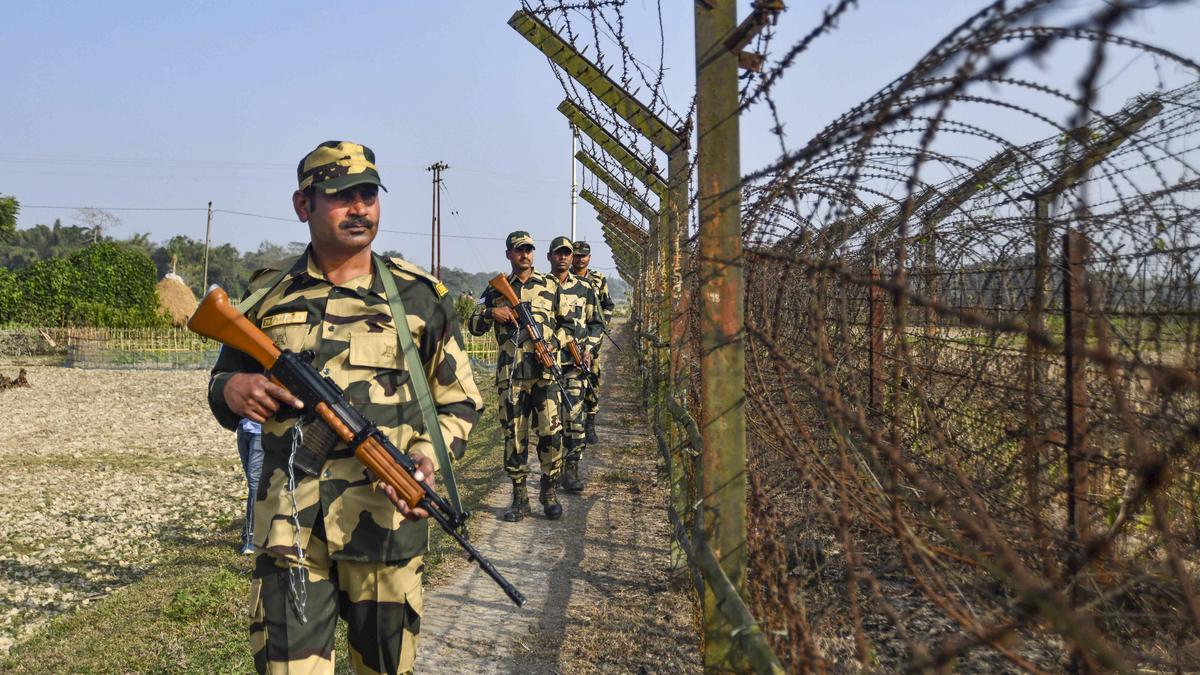Of the 906 Bangladeshis apprehended from August 2024 to March 21 this year, 411 have exited in the past three months. File
| Photo Credit: PTI
The voluntary return of undocumented Bangladeshis is showing an increase after the government in December 2024 began a crackdown against foreigners staying illegally in India, following political changes in the neighbouring country, a source in the Union Ministry of Home Affairs (MHA) said.
Against 337 undocumented Bangladeshis without visas and passports who were apprehended while crossing the eastern border from January to July 2024, those apprehended in the subsequent months, from August 2024 till March 21 this year, stood at 906. Out of this, 411 exits had been recorded in the past three months, data accessed by The Hindu shows.
Also read: Two suspected irregular migrants from Bangladesh arrested at Angamaly in Kerala
In December 2024, the MHA wrote to all States to identify and deport undocumented Bangladeshi migrants. The Delhi Police, for instance, commenced a two-month drive in January to identify Bangladeshis living illegally in the country. Such drives were also conducted in Rajasthan, Telangana, and Odisha, among other States.
In the past 13 months, as many as 2,355 undocumented Bangladeshi nationals were also apprehended as they were trying to enter the country. There were 153 people from other nationalities, including Myanmar, who were apprehended along the Bangladesh border during the same period.

A senior government official said that the agencies maintained a record of all apprehensions at the border, along with the entry and exit of undocumented Indians.
From January 1, 2024 to March 21, 2025, 533 Indians were apprehended at the Bangladesh border — 237 while entering the country, and 296 while they were exiting India.
Bangladesh witnessed significant political changes in August 2024, following the ouster of Prime Minister Sheikh Hasina.
A senior Border Security Force (BSF) official explained how they determined if an undocumented person was from Bangladesh or India. “We have ways to check their identity through local sources as, usually, we have a record of people living within few kilometres of the border. Dialect (spoken), and phone records also provide clues. Those apprehended at times confess also,” the BSF official said.
Another BSF official said that to avoid legal cases that went on for years, they had also been pushing back undocumented migrants in coordination with Border Guards Bangladesh (BGB).

“Since the MHA’s directive to identify and deport illegal Bangladeshis, we have seen a surge in the number of such people voluntarily leaving the country. There could be other reasons also. Before they leave, their biometrics are recorded,” the official said.
Around 300 Aadhaar cards and other identity papers, including driving licenses, PAN cards, and voter ID cards, found in the possession of Bangladeshi nationals, were cancelled in the past one year, after the BSF wrote to the Unique Identification Authority of India (UIDAI) and other government agencies.
The BSF, deployed along the 4,096 km International Border with Bangladesh has been on a heightened vigil since August 2024, with instructions from the MHA “to not allow anyone into the country without valid documents”. The MHA informed the Lok Sabha on February 4 that over 800 km of the border with Bangladesh was yet to be fenced, adding that objections from the BGB were one of the challenges faced in the completion of the work.
Also read: Delhi Police continues crackdown on ‘illegal’ Bangladeshi immigrants
Based on the recommendations of a committee that was formed by the MHA in 2022, the UIDAI was asked to maintain a “negative list” to stop undocumented migrants from procuring the identity document in future.
The committee chaired by the Registrar General of India to deliberate on the functions of the UIDAI recommended that a mechanism be developed to capture biometric and demographic details of identified illegal migrants in accordance with the UIDAI’s standard so that it could serve as a “negative list” for non-issuance of Aadhaar by the UIDAI in future.
The MHA asked the UIDAI, the Bureau of Immigration, the Ministry of External Affairs, and the National Crime Records Bureau to ensure that the collection of biometrics was standardised.
Published – March 31, 2025 09:14 pm IST
